Marseille
Marseille is a city in the south of France. The capital of the department of Bouches-du-Rhône and the Provence-Alpes-Côte d’Azur region, Marseille, on the south coast of France, is the second largest city in the country, after Paris, with a population of 852 516 inhabitants in 2012 An area of 241 km2, the 3rd largest metropolitan region in France after Paris and Lyon.
Known to the ancient Greeks and Romans as Massalia. Marseille was the most important commercial center of the region and the main commercial port of the French Empire. Marseille is now the largest city in France on the Mediterranean coast and the largest port for trade, freight and cruise ships. The European capital of culture, with Košice in Slovakia in 2013. It hosted the European Football Championship in 2016 and will be the European capital of sport in 2017. The city is home to several campuses of the University of Aix -Marseille and Part of one of the largest metropolitan metropolitan areas of France, the metropolis of Aix-Marseille-Provence.
Geography
Marseille is the second largest city in France after Paris and the center of the third metropolitan region in France after Paris and Lyon. To the east, from the small fishing village of Callelongue on the outskirts of Marseille and extending as far as Cassis, are the Calanques of Marseille, a rugged coastal area intersected by small mouths of the fjord type. Further east are the Sainte-Baume (a ridge of 1,147 m rising from a forest of deciduous trees), the city of Toulon and the Côte d’Azur. To the north of Marseille, beyond the summits of Garlaban and Etoile, is the Sainte-Victoire perched at 1 011 m. To the west of Marseilles is the former colony of artists of the Estaque; Further to the west are the Blue Coast, the Gulf of Lion and the Camargue in the Rhone delta. The airport is located to the north-west of the city, in Marignane on the Etang de Berre.
The main thoroughfare of the city (the vast Boulevard de la Canebière) extends eastwards from the Old Port to the Reformed area. Two large forts flank the entrance of Old Port-Fort Saint-Nicolas to the south and Fort Saint-Jean to the north. Further on, in the bay of Marseilles, is the archipelago of Friuli which comprises four islands, one of which is the site of the castle of If, made famous by the novel of Dumas the Count of Monte Cristo. The main shopping center of the city crosses the Canebière street St Ferréol and the Center Bourse.
The center of Marseille has several pedestrian zones, notably the rue St Ferréol, the Cours Julien near the Conservatoire de Musique, the Cours Honoré-d’Estienne-d’Orves off the Old Port and the district of the Hôtel de Ville . To the south-east of the center of Marseille in the 6th arrondissement are the Prefecture and the monumental fountain of Place Castellane, an important bus and metro interchange. To the south-west are the hills of the 7th arrondissement, dominated by the Notre Dame de la Garde basilica. The station of Marseille Saint-Charles is to the north of the Bourse Center in the 1st arrondissement; It is connected by the boulevard of Athens to the Canebière.
Climate of Marseille
Marseille has a Mediterranean climate with mild winters and wet summers, especially dry. December, January and February are the coldest months, with average temperatures of around 12 ° C during the day and 4 ° C at night. July and August are the warmest months, with average temperatures of around 28-30 ° C during the day and 19 ° C at night to the Marignane airport (35 km Marseille) but in the city near the sea The average temperature is 27 ° C in July.
Marseille is officially the sunniest city in France with over 2,900 hours of sunshine while the average sun in France is about 1,950 hours. It is also the largest dryest city with only 512 mm of rainfall per year, notably thanks to the Mistral, a cold, dry wind coming from the Rhone Valley which occurs mainly in winter and spring and which usually brings Sky clear and sunny to the area. Less common is the Sirocco, a hot, sandy wind coming from the Sahara desert. Snowfall is rare; Every other year sees snowflakes falling.
The warmest temperature was 40.6 ° C on 26 July 1983 during a large heat wave, the lowest temperature was -14.3 ° C on 13 February 1929 during a strong cold wave but 38 ° C C or -7 ° C are rare.
Economy
Marseille is a major French center for trade and industry, with excellent transport infrastructure (roads, seaport and airport). Marseille Provence Airport, is the fourth largest airport in France. In May 2005, the financial magazine
The French financial magazine L’Expansion has designated Marseilles as the most dynamic of the major French metropolises, citing figures showing that 7,200 companies had been created in the city since 2000. Marseille is also the second largest research center in France with 3 000 researchers at the University of Aix-Marseille. Beginning in 2014, the metropolitan area of Marseille had a GDP of $ 60.3 billion, or $ 36,127 per capita.
Ports of Marseille

The old port of Marseille The night
The entrance to the Old Port, flanked by Fort Saint-Jean and Fort Saint-Nicolas Historically, Marseille’s economy was dominated by its role as the port of the French Empire, linking the North African Colonies of Algeria, Morocco and Tunisia with metropolitan France. The Old Port was replaced as the main port for trade by the Port of Joliette during the Second Empire and now contains restaurants, offices, bars and hotels and operates mainly as a private marina. The majority of the port and wharves, which declined in the 1970s after the oil crisis, have recently been redeveloped with European Union funds. Fishing remains important in Marseille and the food economy of Marseilles is fueled by local catches; A daily fish market is still held on the Quai des Belges du Vieux-Port.
The economy of Marseilles and its region is still linked to its commercial port, the first French port and the fifth European port by cargo tonnage, located north of the Old Port and east of Fos-sur-Mer. Some 45,000 jobs are linked to port activities and represent 4 billion euros of added value for the regional economy. 100 million tonnes of cargo pass through the port each year, 60% of which is oil, making it the number one in France and the Mediterranean and number three in Europe. However, in the early 2000s, the growth of container traffic was stifled by constant strikes and social upheaval. The port is among the top 20 in Europe for container traffic with 1,062,408 (20 “containers) and the new infrastructure has already increased the capacity to 2 million. Oil refining and shipbuilding are the main industries, but chemicals, soap, glass, sugar, building materials, plastics, textiles, olive oil and processed Also important products. Marseille is connected to the Rhône Canal and thus has access to the vast river network of France. The oil is transported northwards by pipeline to the Paris basin.
Business and services
In recent years the city has also experienced strong growth in employment in the services sector and a shift from light manufacturing to a high-tech cultural sector. The Marseille region is home to thousands of businesses, 90% of which are small and medium-sized enterprises with fewer than 500 employees. Among the most famous are CMA CGM, Giant Container Transport; The Maritime Expertise Company (Comex), world leader in underwater engineering and hydraulic systems; Airbus Helicopters, an Airbus company; Azur Promotel, an active property development company; Provence, the local daily; RTM, Marseille’s public transport company; And the Société nationale maritime Corse Méditerranée (SNCM), a major operator of passenger, vehicle and freight transport in the western Mediterranean. The urban operation Euroméditerranée has developed a wide range of office space and Marseille thus welcomes one of the main business districts in France. Marseilles is home to three main technopoles: Château-Gombert (technological innovations), Luminy (biotechnology) and La Belle de Mai (17,000 m2 of offices dedicated to multimedia activities).
Tourism and attractions
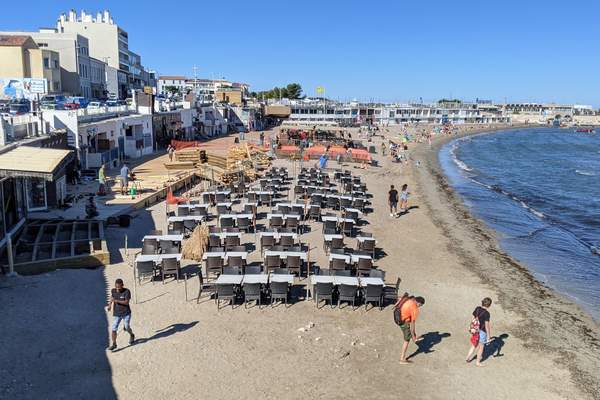
The beach of Pointe Rouge in Marseille
The port is also a major arrival base for millions of people every year, with 2.4 million of which 890,100 from cruise ships. With its beaches, history, architecture and culture (24 museums and 42 theaters), Marseille is one of the most visited cities in France, with 4.1 million visitors in 2012. Marseille is ranked 86th in the World for business tourism and events, amounting from 150 th place a year ago. The number of congress days hosted on its territory has increased from 109,000 in 1996 to almost 300,000 in 2011. They take place in three main sites: the Palais du Pharo, the Palais des Congrès and the Palais des Expositions (Parc Chanot) and the World Trade Center. In 2012, Marseille hosted the World Water Forum.
Several urban projects have been developed to make Marseilles attractive. Thus, new parks, museums, public spaces and real estate projects aim to improve the city’s living environment (Park of the 26th Centenary, Old Port of Marseille, numerous In Euromediterrannee) to attract companies and people. The municipality of Marseille plays a leading role in the development of Marseille as a regional entertainment center in the south of France with a strong concentration of museums, cinemas, theaters, clubs, bars, restaurants, Fashion boutiques, hotels and art galleries.
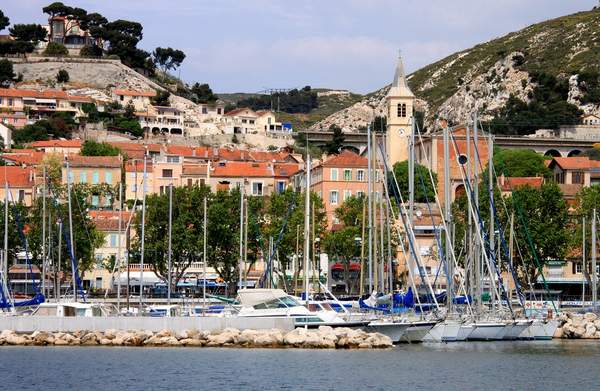
The Estaque bay in Marseille
Culture
Marseille is a city that has its own unique culture and is proud of its differences from the rest of France. Today it is a regional center of culture and entertainment with an important opera, historical and maritime museums, five art galleries and numerous cinemas, clubs, bars, restaurants and hotels.
Marseille has a large number of theaters, including the Criée, the Gymnasium and the Toursky Theater. There is also an extensive cultural center in La Friche, a former match factory behind the St-Charles station. The Alcazar, until the 1960s, a well-known music hall and a variety theater, has recently been completely remodeled behind its original façade and now houses the central municipal library. Other music venues in Marseille are L’Embobineuze and GRIM.
Marseille has also been important in the arts. He was the cradle of many French writers and poets, including Victor Gélu, Valère Bernard, Pierre Bertas, Edmond Rostand and André Roussin. The small port of l’Estaque at the end of the bay of Marseilles has become a favorite place for artists, including Auguste Renoir, Paul Cézanne (who often comes from his home in Aix), Georges Braque and Raoul Dufy.
Marseille European Capital of Culture
Marseille served as the European Capital of Culture in 2013 with Košice. Marseille-Provence 2013 (MP2013) presented more than 900 cultural events organized through Marseille and the surrounding municipalities. These cultural events generated more than 11 million visits. The European Capital of Culture was also an opportunity to invest more than 600 million euros in new cultural infrastructures in and around Marseille, including the MuCEM icon designed by Rudy Ricciotti.
Tarot of Marseille
The Tarot of Marseilles takes its name from the city; It has been called the Tarot de Marseille since the 1930s – a name invented by French card maker and cartomancian Paul Marteau, owner of B-P Grimaud. Previously this game was called Tarot Italian and even earlier it was simply called Tarot. Before being from Marseille, it was used to play the local variant of tarocchi before being used in cartomancy at the end of the 18th century, following the trend established by Antoine Court de Gébelin. The name Tarot of Marseilles (Hammer used the old name Tarot of Marseille) was used in contrast to other types of Tarots such as the Tarot of Besançon; These names were simply associated with cities where there were many maps in the 18th century (formerly several cities in France were involved in card making).
Another local tradition is the manufacture of santons, small craft figurines for Christmas traditional Provencal crib. Since 1803, from the last Sunday in November, there was a Santon Fair in Marseille ;
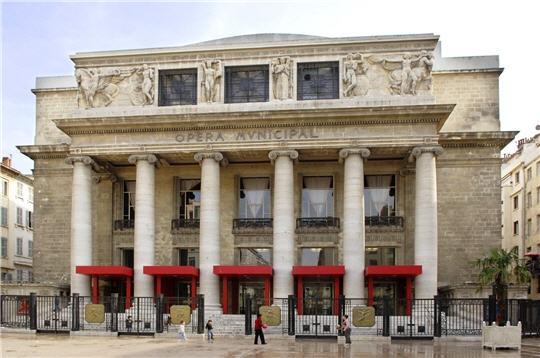
Opera of Marseille
Since its creation at the end of the 18th century and until the end of the 70s, the Opera of Marseille has been the main cultural attraction of Marseille. Located near the Old Port and the Canebière, in the heart of the city, its architecture is comparable to the classic trend of other operas built in Lyon and Bordeaux. In 1919, a fire almost completely destroyed the building, leaving only the stone colonnade and the peristyle of the original façade. The classical facade has been restored and the opera reconstructs in a predominant Art Deco style, following a major competition. Currently, the Opera de Marseille staged six or seven operas each year.
Since 1972, the National Ballet of Marseille has performed at the opera; Its director since its foundation until 1998 was Roland Petit.
Popular events and festivals
There are several popular festivals in different districts, with concerts, entertainment and outdoor bars, such as the Cart Fête in June. On June 21, there are dozens of free concerts in the city as part of the Fête de la Musique. Music from all over the world is present there. Being a free event, many residents of Marseilles will attend.
Marseille is organizing a Gay Pride event at the beginning of July. In 2013, Marseille hosted Europride, an international LGBT event. The International Documentary Festival is held at the beginning of July. At the end of September, the Marsatac electronic music festival takes place. In October, the Fiesta des Suds offers many World Music concerts.
Hip hop music
Marseille is also well known in France for its hip hop music. Bands such as IAM are from Marseille and have initiated the phenomenon of rap in France. Other well-known bands include Fonky Family, Rime Psy 4 (including Soprano and Alonzo) and Keny Arkana. In a different style the ragga music is represented by Massilia Sound System.
Food
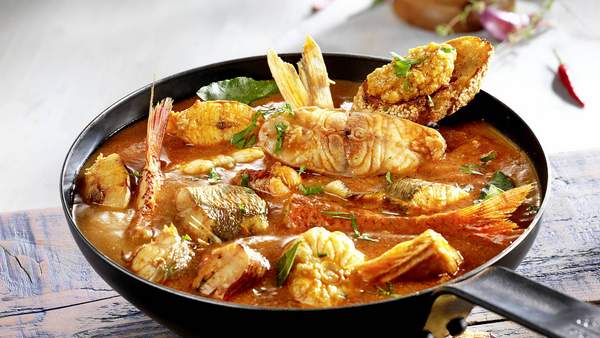
Bouillabaisse
- La Bouillabaisse is Marseille’s most famous seafood dish. It is a fish stew containing at least three varieties of fresh local fish: typical red scorpion fish; Of Grondin; And conger. It may be golden Dorade; Of Turbot; Of the Lotte; Of the Mule; Or whiting, and usually includes molluscs and other seafood such as sea urchins, mussels; Curls; Sea spiders, plus potatoes and vegetables. In the traditional version, the fish is served on a separate tray of the broth. The broth is served with rust, a mayonnaise made with egg yolk, olive oil, red pepper, saffron and garlic, spread on pieces of toast or crusts. In Marseille, bouillabaisse is rarely intended for less than ten persons; The more people sharing the meal, the more different the fish, the better the bouillabaisse.
- Aioli is a sauce made from raw garlic, lemon juice, eggs and olive oil, served with boiled fish, hard boiled eggs and cooked vegetables.
- Anchoïade is a paste made from anchovies, garlic and olive oil, spread on bread or served with raw vegetables.
- Bourride is a soup made from white fish (monkfish, European sea bass, whiting, etc.) and aioli.
- La Fougasse is a Provençal dish, similar to the Italian focaccia. It is traditionally cooked in a wood oven and sometimes filled with olives, cheese or anchovies.
The Navettes de Marseille, in the words of the writer M. F. K. Fisher, are “small cookies shaped like a boat, a hard paste that vaguely has a taste of orange peel”. - Panisse is boiled chickpea flour, firm, then cut into blocks and fried.
Pastis is an alcoholic beverage made from aniseed and spices. It is extremely popular in the area. - The Feet Packs is a dish prepared from feet of sheep and offal.
- Pistou is a combination of fresh ground basil and garlic in olive oil, similar to Italian pesto. Pesto soup combines pesto in a broth with pasta and vegetables.
- The tapenade is a paste made of chopped olives, capers and olive oil (sometimes anchovies can be added).
Main sites to discover
Marseille is considered an important center of art and history. The city has many museums and galleries and there are many ancient buildings and churches of historical interest.
The Center of Marseille
Most attractions in Marseille (including shopping areas) are located in the 1st, 2nd, 6th and 7th arrondissements. These include:
-
- The Old Port, is the main port and marina of the city. It is guarded by two massive forts (Fort Saint-Nicolas and Fort Saint-Jean) and is one of the main places to eat in town. Dozens of cafes line the seafront. The Quai des Belges at the end of the port is the site of the fish market every day. Much of the north part of the wharf was rebuilt by architect Fernand Pouillon after its destruction by the Nazis in 1943.
- The town hall, a baroque building from the 17th century.
- The Center Bourse and rue St-Ferréol (rue de Rome and rue Paradis), the main shopping area in the center of Marseille.
- The Porte d’Aix, a triumphal arch commemorating the French victories in the Spanish Expedition.
-
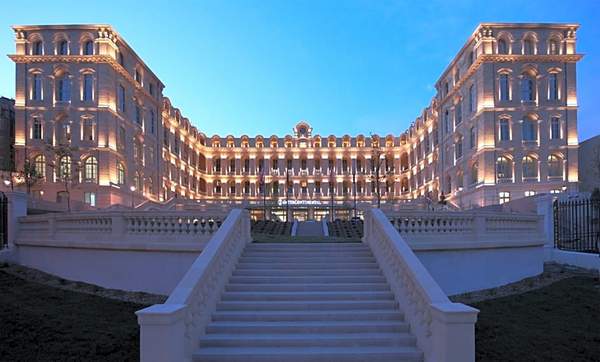
Hôtel Dieu Marseille
- The Hôtel-Dieu, former hospital of the Basket, transformed into Hotel InterContinental in 2013.
- La Vieille Charité au Panier, a building of architectural importance designed by the Puget brothers. The central baroque chapel is located in a courtyard lined with arcade galleries. Originally built as a chaplaincy, it now houses an archaeological museum and a gallery of African and Asian art, as well as bookstores and a café. It is also home to the International Center for Poetry in Marseille.
- The Cathedral of Santa Maria Maggiore or La Major, founded in the 4th century, enlarged in the 11th century and completely rebuilt in the second half of the 19th century by the architects Léon Vaudoyer and Henri-Jacques Espérandieu. The present cathedral is a gigantic Roman-Byzantine building. A Roman transept, a choir and an altar survive from the older medieval cathedral, spared from complete destruction only as a result of public protests at the time.
- The parish church of Saint-Laurent of the 12th century and the adjacent chapel of the 17th century of Sainte-Catherine, on the quay near the cathedral.
- The abbey of Saint-Victor, one of the oldest places of Christian worship in Europe. Its 5th century crypt and its catacombs occupy the site of a Hellenic cemetery, later used for Christian martyrs and revered since. Pursuing a medieval tradition, a Black Madonna of the crypt is carried in procession along the Holy Street each year at Candlemas, for a blessing from the Archbishop, followed by a mass and the distribution of “shuttles” and Green votive candles.
Museums and Galleries
In addition to the two centers of the Old Charity, described above, the main museums are:
- The Museum of Civilization of Europe and the Mediterranean (MuCEM) and Villa Méditerranée were inaugurated in 2013. The MuCEM is devoted to the history and culture of European and Mediterranean civilizations. The adjacent Mediterranean Villa, an international center for cultural and artistic exchange, is partially built under water. The site is connected by footbridges to Fort Saint-Jean and the Panier.
- The Musée Regards de Provence, inaugurated in 2013, is located between Notre Dame de la Majeur Cathedral and Fort Saint-Jean. It occupies a converted port building built in 1945 to monitor and control potential dangers to marine health, especially epidemics. It now houses a permanent collection of historical works of art from Provence as well as temporary exhibitions.
- The Musée du Vieux Marseille, housed in the 16th century by the Maison Diamantée, describes everyday life in Marseille from the 18th century onwards.
- The Roman Docks Museum preserves the remains of the Roman commercial warehouses in situ and has a small collection of objects from the Greek period up to the Middle Ages, discovered on the site or found in wrecks.
- The Museum of History of Marseille, dedicated to the history of the city, located at the Center Bourse. It contains remains of the Greek and Roman history of Marseille as well as the best preserved hull of a sixth century ship in the world. Ancient vestiges of the Hellenic port are displayed in the adjacent archaeological gardens, the Garden of the Vestiges.
- Cantini Museum, Museum of Modern Art near the Palace of Justice. It houses works of art associated with Marseille as well as several works by Picasso.
- The Grobet-Labadie Museum, opposite the Palais Longchamp, houses an exceptional collection of European art and old musical instruments.
- The 19th century Longchamp Palace, designed by Esperandieu, is located in Longchamp Park. Built on a large scale, this building with Italian columns stands behind a vast monumental fountain with waterfalls. The water games mark and mask the entry point of the Canal de Provence in Marseille. Its two wings house the Museum of Fine Arts of Marseille and the Museum of Natural History of Marseille.
- The Château Borély is located in the Parc Borély, a park off the bay of Marseille with the botanical garden E.M. Heckel, a botanical garden. The Museum of Decorative Arts, Fashion and Ceramics opened its doors to the renovated castle in June 2013.
- The Museum of Contemporary Art of Marseille (MAC), a museum of contemporary art, opened its doors in 1994. It is devoted to American and European art from the 1960s to the present day.
- The Musée du Terroir Marseillais in Château-Gombert, dedicated to crafts and Provençal traditions.
Outside the center of Marseille
The main attractions outside the city center are:
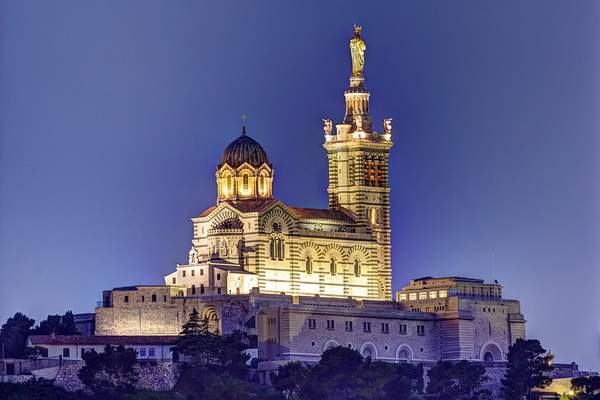
La Bonne Mère The Good Mother
The 19th century Notre-Dame-de-la-Garde Basilica, an enormous Roman-Byzantine basilica built by the architect Espérandieu in the hills south of the Old Port. The terrace offers a spectacular panoramic view of Marseille and its surroundings.
Stade Vélodrome, the stadium of the city’s main football team, Olympique de Marseille.
L’Unité d’Habitation, an emblematic and emblematic Modernist building designed by the Swiss architect Le Corbusier in 1952. On the third floor is the gourmet restaurant Le Ventre de l’Architecte. On the roof is the contemporary gallery MaMo opened in 2013.
Les Docks de Marseille, a 19th century warehouse transformed into offices.
Les Jardins du Pharo, a park overlooking the Mediterranean and the Old Port.
La Corniche, a picturesque coastal road between the Old Port and the Bay of Marseille.
The beaches of Prado, Pointe Rouge, Goudes, Callelongue and The Prophet.
The Calanques, a wild mountainous mountainous region of exceptional natural beauty accessible from Callelongue, Sormiou, Morgiou, Luminy, and Cassis. The national park of the Calanques became the tenth national park of France in 2012.
The islands of the Frioul archipelago in the Bay of Marseille, accessible by ferry from the Old Port. The prison of Château d’If was one of the executives of the Count of Monte-Cristo, the novel of Alexandre Dumas. The neighboring islands of Ratonneau and Pomègues are connected by an artificial breakwater. The site of a former garrison and the quarantine hospital, these islands are also of interest for their marine fauna.
Transport
International and regional transport
Marseille Provence Airport, the fifth most frequented of France.
The city is served by an international airport, Marseille Provence Airport, located in Marignane. The airport is the fifth busiest French airport and is the 4th largest growth in European traffic in 2012. An extensive motorway network connects Marseille to the north and west (A7), Aix-en-Provence to the north (A51), Toulon (A50) and the Côte d’Azur (A8) to the east.
The railway station of Marseille Saint-Charles is the main railway station of Marseille. Saint-Charles station is also one of the main terminals of the TGV in the south of France. It serves the cities of Aix-en-Provence, Briançon, Toulon, Avignon, Nice, Montpellier, Toulouse, Bordeaux, Nantes … making Marseille accessible in three hours from Paris (a distance of more than 750 km) An hour and a half from Lyon. There are also direct TGV lines for Lille, Brussels, Nantes, Geneva and Strasbourg as well as Eurostar services in London. In addition, the night train (Intercités de Nuit) from Luxembourg and Strasbourg stops in Marseille on its way to Nice, while the night train from Paris to Nice serves the Gare de Blancarde.
Marseille has a large ferry terminal, the Maritime Station, with services to reach Corsica, Sardinia, Algeria and Tunisia.
A free shuttle service operates between the two opposite quays of the Old Port. Starting in 2011, shuttle ferry services operate between the Old Port and Pointe Rouge; In the spring of 2013, she also went to l’Estaque. There are also ferry services and boat trips available from the Old Port to Friuli, the Calanques and Cassis.
Further readings
Sport
The city has a wide variety of sports facilities and teams. The most popular team is the football club of the city, Olympique de Marseille, finalist of the UEFA Champions League in 1991, before winning the competition in 1993. The club also became finalist of the UEFA Cup in 1999 and 2004. The club was very successful when Bernard Tapie was the owner. The club takes up residence at the Stade Vélodrome, which can accommodate around 67,000 people, also works for other local sports, as well as the national rugby team. Stade Velodrome hosted several matches at the 1998 FIFA World Cup, the 2007 Rugby World Cup and the UEFA Euro 2016. The local rugby teams are Marseille XIII and Marseille Vitrolles Rugby. Marseille is famous for its important activity of petanque. It is even known as the capital of petanque. In 2012 Marseille hosted the World Championship of Petanque and the city welcomes each year the World of the Marseillaise of petanque, the main competition of petanque.
Sailing is a major sport in Marseille. The wind conditions allow regattas in the warm waters of the Mediterranean. Throughout the year, the climate can be windy while the sea remains smooth enough to allow navigation. Marseille was host to 8 (2010) Match Race France, events that are part of the World Match Racing Tour. The event brings together the best sailing teams in the world in Marseille. The identical boats (J Boats J-80 racing yachts) run two by two in a water battle that tests sailors and skippers within their physical capabilities. The accumulated points count for the World Match Racing Tour and a place in the last event, with the overall winner taking the ISAF World Match Racing Tour title. This competition is ideal for spectators in Marseille because the races take place near the shore and offer an excellent view.
Marseille is also a place for other water sports such as windsurfing and powerboat.
Marseilles is the city where the scuba diving was born, with the commander cousteau and its various inventions. Marseille has three golf courses. The city has dozens of gyms and several public swimming pools.
Running is also popular in many parks in Marseille such as Le Pharo and Le Jardin Pierre Puget. The jogger likes to run on the Corniche in front of the sea. An annual race is organized between Marseille and Cassis neighbor
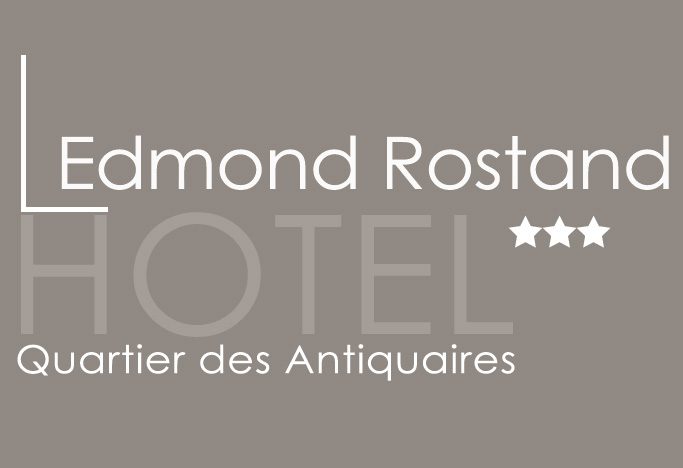
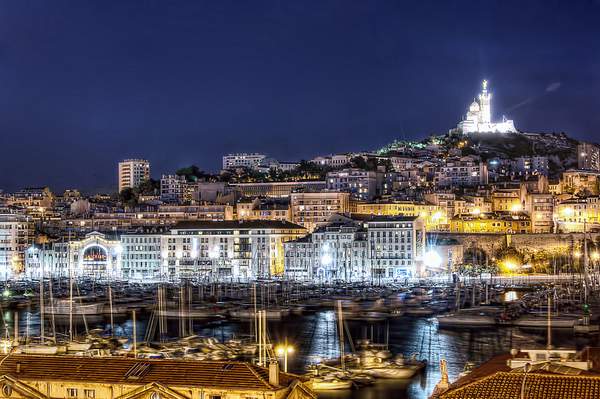
0 Comments